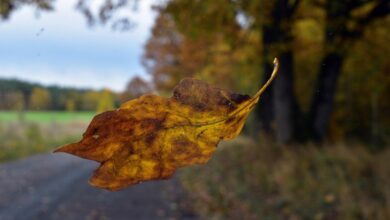The Lesser of Two Yellowlegs – Reflections of the Natural World
One Moment in Nature is a reflection back in time to a moment of discovery as I explored the natural settings around me. Through the sharing of this moment, is my hope that readers will become motivated to learn more about our environment and its inhabitants, and become passionate advocates for conservation. One Moment in Nature is a Reflections of the Natural World Blog Post Series by Jim Gain
THE LESSER YELLOWLEGS MOMENT
As the doldrums of summer begin to wane, birdwatchers take to the wetlands, or in this case, the sewage ponds to hunt for shorebirds that have begun their southward migration back to the tropics. One of those target species is a dimunitive form of the common Greater Yellowlegs, the appropriately named Lesser Yellowlegs. The separation of these two species is easy when they are side-by-side as in the photo below.
However, when they aren’t posing together, the identification is more challenging. If the bird is clearly a “yellowlegs” (beware of the potential Stilt Sandpiper that may sneak in) and the bill length is equal to or shorter than the width of the head, the bird is a Lesser.
On this particular morning at the Ceres Water Reclamation Plant I counted 8 Lesser Yellowlegs mixed in the the 42 Greater Yellowlegs. While they may be found in the Central Valley from July through May, except for the late summer migration period when they are fairly common, they are generally pretty rare.
ABOUT THE LESSER YELLOWLEGS IN CENTRAL CALIFORNIA
In California’s Central Valley, the Lesser Yellowlegs is a familiar migrant, weaving through the region during both spring and fall. It favors shallow freshwater habitats—flooded fields, seasonal wetlands, rice paddies, and the margins of ponds and sloughs—where its slender frame and bright yellow legs stand out against the mud. Unlike its larger cousin, the Greater Yellowlegs, this species often gathers in modest flocks and is more tolerant of human-altered landscapes. Spring migration peaks in April, while fall birds arrive from late July through September, with juveniles making up the bulk of the later wave.
The species occurs widely across the Valley, especially in areas managed for waterbirds, such as the Sacramento National Wildlife Refuge Complex and agricultural lands with post-harvest flooding. Its adaptability to artificial wetlands and flooded croplands has helped maintain its presence, though its numbers can fluctuate depending on water availability and habitat conditions. While not a breeder in California, the Lesser Yellowlegs relies heavily on the Valley’s stopover sites to refuel during its long journey between boreal breeding grounds and South American wintering areas.
Despite its apparent abundance, the global conservation status of the Lesser Yellowlegs has become a growing concern. It is currently listed as Vulnerable by the IUCN due to significant population declines—estimated at up to 49% over three generations—driven by habitat loss and unsustainable harvest levels at migration and wintering sites. In the Central Valley, the species benefits from wetland conservation and waterbird-friendly agricultural practices, but its future depends on continued protection of migratory corridors and inland wetlands across the Americas.
Natural history reveals a bird built for distance and precision. Breeding in open boreal forests near shallow ponds, the Lesser Yellowlegs lays its eggs on the ground and raises precocial young that feed themselves within days. On migration, it forages actively, probing and pecking for aquatic invertebrates with rapid, darting movements. Its high-pitched tu-tu call and graceful flight make it a recognizable figure in the Valley’s seasonal rhythms—a delicate traveler whose fate is tied to the health of wetlands far beyond California.
A PHOTO GALLERY OF LESSER YELLOWLEGS
Most recent Blog Posts from the One Moment in Nature series.




